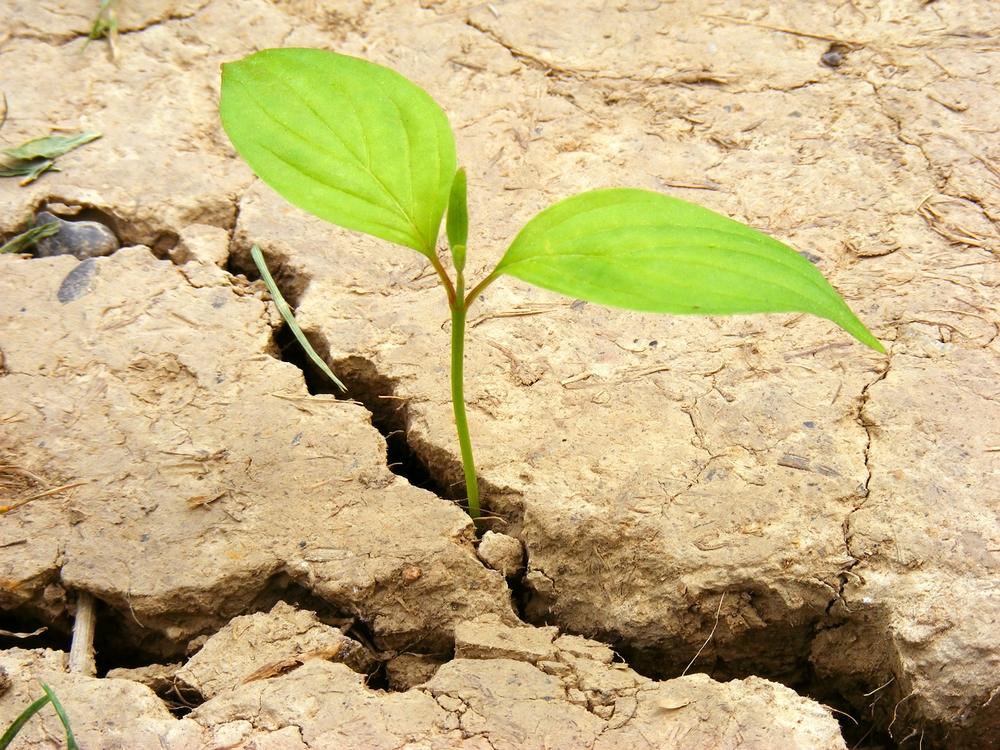 If you have clay soil, you know how challenging planting in this type of condition can be. If you’re faced with clay soil, there are several things you can do to improve its condition and ensure your success.
If you have clay soil, you know how challenging planting in this type of condition can be. If you’re faced with clay soil, there are several things you can do to improve its condition and ensure your success.
Checking Soil Type
You can tell if you have clay soil by observing the following characteristics:
1) When wet, it will stick to shoes and garden tools.
2) It is slow to warm up in the summer.
3) It is slow draining.
4) Once it does dry, however, water can runoff it without soaking in, meaning your plants might not be receiving the water they need.
5) It tends to be alkaline.
6) You will see many clumps. The clumping nature of clay is what makes it hard for plant roots to penetrate.
If you are still not sure what type of soil you have you can dig a hole and water it. Watch how fast the water gets absorbed. If it absorbs almost instantly or very quickly, you probably do not have much clay in your soil. If the water takes a long time to absorb (it can take even longer than a day in some cases), then you have clay soil.
Despite these negative qualities of clay soil, there are still some positives. It is generally higher in nutrients than sandy soils and has better moisture retention.
Solutions for Clay Soil
Amending the Soil
Amending clay soil can take a lot of time and effort, but if done properly can definitely pay off in the end. A whole area should be amended at once and not just the holes you plan to plant in. If only holes are done, the plant will grow happily until it reaches the ‘wall’ of clay outside of the hole. Another thing to consider is that soils are often easier to work with in the fall once they have had more time to dry out.
The first thing you should use to break up the soil is clay buster. Clay buster is a mineral compound that is used to break up clay. It is applied directly to the soil. It works by bonding with the clay molecules helping it to open up and allow the roots to penetrate into the soil. In our Manitoba climate, it is best to apply clay buster in the fall.
After clay buster is applied, organic matter should also be added. Adding plenty of organic material will raise the humus level and will eventually result in a deep rich soil. You can add well-aged compost, composted manure, or any organic material that has not been treated with chemicals. Coarse materials, such as zeolite, are better than fine ones.
Many people will suggest adding sand to clay soils, but be careful if you choose to do this. For sand to have a positive effect it must be coarse and a lot usually must be added. Adding fine sand or not enough of it can make the perfect conditions for bricks.
Planting in Raised Beds
Planting in raised beds can be a faster solution than amending the soil. A raised planter of one to two feet filled with topsoil can be the answer for many people. This is a good solution for most annual flowers and vegetables. Keep in mind, though, that deep rooted plants will quickly grow down to reach the clay at the bottom of the raised planter. Planting trees, shrubs, or bushes in raised planters is not recommended in our Manitoba climate.
Choosing the Right Plants
The easiest solution for planting in clay soil is to simply choose plants that thrive in this type of growing condition. Here is a list of twelve plants that can grow in zone 3, and their common names to get you started:
- Achillea, common name Yarrow
- Amsonia, common name Bluestar
- Aster, common name Aster
- Baptisia, common name Baptisia, a native prairie plant
- Coreopsis, common name Coreopsis
- Echinacea, common name Coneflower
- Eryngium, common name Sea Holly
- Geranium, common name Perennial Geranium
- Heliopsis, common name False Sunflower
- Hemerocallis, common name Daylily
- Heuchera, common name Coral Bells
- Rudbeckia, common name Black-Eyed Susan
